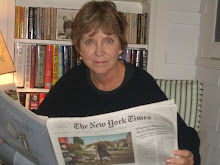War makes headlines, but today's conflicts are getting harder and harder for journalists to cover as we've been discussing. Last week's handout in class pointed to the difficulties of reporting on what is going on in northwest Pakistan and the Swat Valley . Yesterday I shared Mark McDonald's story (NYT/IHT), dateline Hong Kong, reporting at considerable distance about what's going on in yet another human tragedy in Sri Lanka. A dateline, by the way, indicates "place of writing."
Class assignment was to consider the attribution in McDonald's story. In other words, what were the sources of the reporter's information? I also shared a NYTimes story about how satellite imaging is being used to estimate how many people are trapped behind combat lines. All those little dots. An amazing reporting tool, satellite imaging, but how much more powerful a story with quotes from real people who can be identified by name and photography that shows humans, not dots. Compare today's story in the NYTimes From Sandy Stip of Sri Lanka, Tales of Suffering as War Traps Thousands to the class handouts.
Monday, April 27, 2009
Subscribe to:
Post Comments (Atom)

2 comments:
If it was impossible for a reporter to get information from conflict area. He/ she don't have to sacrifice their liefs in order to get the news. I think technology should serve every body including journalists, to make their job easier. I don't see any wrong with using alternative sources instead of begin at the filed. Its true that stories form the filed have much more stronger appeal. Yet, it is better than nothing.
Indeed!
Post a Comment